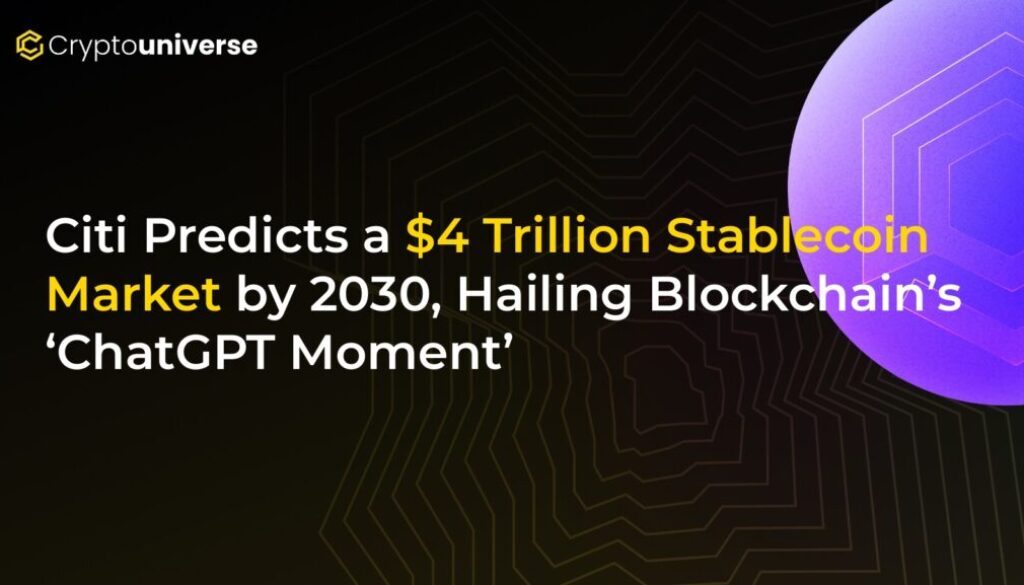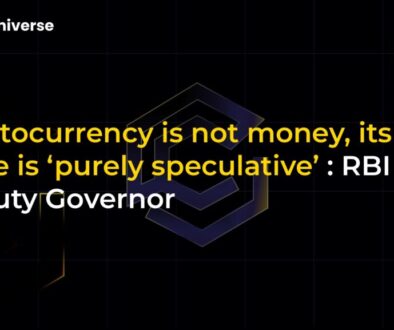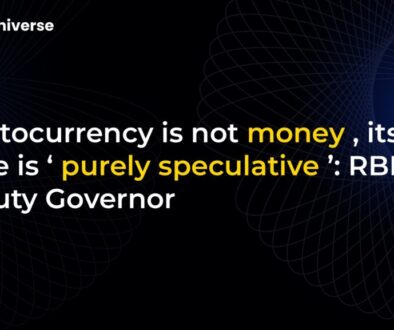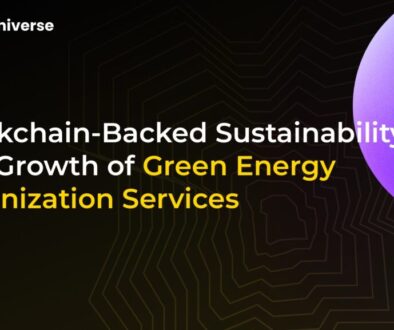Citi Predicts a $4 Trillion Stablecoin Market by 2030, Hailing Blockchain’s ‘ChatGPT Moment’

The Dawn of a New Financial Era: Stablecoins Hit Their ‘ChatGPT Moment’
Just as ChatGPT brought artificial intelligence from the realm of science fiction into our daily lives seemingly overnight, blockchain technology is experiencing its own watershed moment. According to a new, bullish report from banking giant Citi, this breakthrough will catapult the stablecoin market to an astonishing $4 trillion in issuance by 2030.
This revised forecast, up from a previous $3.7 trillion projection, signals a massive shift in how the world’s financial institutions view digital dollars. The consensus is clear: stablecoins are no longer a niche crypto-asset but a foundational pillar of the future global economy.
What Are Stablecoins?
For the uninitiated, stablecoins are a type of cryptocurrency designed to maintain a stable value. Unlike volatile assets like Bitcoin, they are typically pegged 1-to-1 to a stable reserve asset, most commonly the U.S. dollar. This stability makes them ideal for transactions, payments, and as a reliable store of value in the digital world.
The Numbers Behind the Boom: A Market on Fire
Citi’s report isn’t just about future potential; it’s grounded in the explosive growth happening right now. The bank’s analysts, Ronit Ghose and Ryan Rugg, project that this burgeoning market will eventually support an incredible $200 trillion in annual transactions.
This optimism is reflected in current market data, with the total stablecoin market capitalization surging toward the $300 billion mark. But the most compelling evidence comes from real-world use cases.
“In 2022, monthly volume in business-to-business stablecoin payments was under $100 million. Today, it’s over $3 billion,” noted Anna Strebl, CEO of the stablecoin payment platform Confirmo. “That shift shows stablecoins aren’t just a peer-to-peer tool anymore — they’ve become the backbone of global settlement.”
Why Now? The Catalysts for Explosive Growth
Several key factors are converging to create this perfect storm for stablecoin adoption.
1. Regulatory Clarity Unlocks Corporate America
For years, regulatory uncertainty kept many large corporations on the sidelines. The recent signing of the Genuis Act, the first federal framework for the industry, has acted as a powerful green light. Ron Tarter, CEO of stablecoin company MNEE, explained the impact:
“Stablecoins went from fringe to urgent, and every major player feels the pressure to move fast.”
2. The Investment Gold Rush
With regulatory hurdles clearing, institutional money is flooding into the sector. The numbers are staggering:
- Venture Capital: Stablecoin startups have raised $537 million in 2025 alone, a fivefold increase from 2024.
- Public Markets: Circle, the issuer of the popular USDC stablecoin, raised $1 billion in its June IPO and maintains a market cap of $36 billion.
- Mega-Valuations: Tether, the largest stablecoin operator, is reportedly in talks to raise $20 billion at a colossal $500 billion valuation, putting it in the same league as tech titans like OpenAI and SpaceX.
What Does the Future of Money Look Like?
Citi’s report suggests the future isn’t a battle between traditional bank money and digital dollars, but a hybrid ecosystem where they coexist. The bank envisions a diverse landscape with a wide variety of issuers offering on-chain dollars.
Interestingly, this digital revolution could also strengthen the traditional financial system. The massive demand for dollar-pegged assets will create “incremental new demand” for U.S. Treasuries, the primary asset backing most major stablecoins.
This sentiment is echoed at the highest levels of government. U.S. Treasury Secretary Scott Bessent has also predicted a bright future for the asset class, forecasting it could swell into a $2 trillion market within the next few years.
The message is undeniable. The <$4 Trillion Stablecoin Market> is not a distant dream; it’s a rapidly approaching reality. Blockchain’s ‘ChatGPT moment’ has arrived, and it’s poised to fundamentally reshape global finance as we know it.


